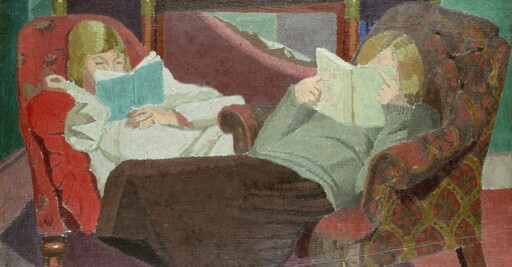This is an edition of the Books Briefing, our editors’ weekly guide to the best in books.
Anna Holmes has never forgotten reading Judy Blume’s Forever as a tween. Why? Because the book, published 50 years ago this month, happily acknowledged that a teenage girl might want to have sex, and that she might even enjoy it, as Holmes wrote last week. This made the novel a magnet for adult disapproval and censorship, and “obtaining, hiding, and reading it—and then sharing it with others—was a rite of passage,” she writes.
First, here are three new stories from The Atlantic’s Books section:
“Diseducators,” a story by Domenico StarnoneThere is no green transition without consequences.“Syncretism,” a poem by Nina C. Peláez
Several decades later, the fervor over Forever might feel quaint to some: “Now teen girls can get a crash course on sex with a few keystrokes,” Holmes notes. But book banning is, unfortunately, all the rage—fittingly, Banned Books Week starts on Monday. And even though we live in what Holmes called a “digital, sex-soaked era,” as she noted, Blume’s half-century-old novel remains a target; the Utah State Board of Education banned it for containing “pornographic” or “indecent” content only last year. In the 21st century, censorship of work like Blume’s—her books Deenie and Are You There, God? It’s Me, Margaret, which mention masturbation and menstruation, have also been the subjects of controversy—hasevolved into a broader attack on books that discuss topics such as racism, sexism, or queerness. Anything with a whiff of “wokeness” is suspect.
In the 2020s, social media is a major driver of these altercations. Parents, activists, and politicians can circulate a book’s most objectionable passages in posts made for virality. When a book attracts wide attention, challenges can stack up quickly. Consider Maia Kobabe’s memoir, Gender Queer, released in 2019 by a small, independent publisher, which in just two years became America’s most-banned book. Or take Stephen Chbosky’s The Perks of Being a Wallflower, which was published in 1999 and has made the American Library Association’s list of the most frequently banned books 10 times since 2001. In December, the public-school district I graduated from removed it entirely from its libraries. The novel’s bad reputation, based on its references to abortion, homosexuality, drugs, suicide, and sexual abuse, has traveled so widely that earlier this year, it was even banned by the authoritarian government of Belarus.
I don’t remember Perks being an especially scarring book. I read it in freshman-year homeroom, when I was 15—the age of its protagonist, Charlie—and mostly wondered why he was being such a prude. Perks is largely about the anxiety provoked by the transition out of childhood. At the beginning of the book, Charlie isn’t quite ready to enter the social world of his high school, but two seniors coax him to take the plunge. Together, Charlie and his friends deal with a barrage of adolescent challenges, but even when the novel addresses tough subjects, it’s never too bleak (the writing is borderline saccharine). Charlie learns, eventually, to see himself as someone worthy of happiness.
In the long, ignominious history of American book banning, portrayals of sex have been cited again and again as beyond the pale for schools and libraries, but in recent years the list of forbidden topics has grown. Politicians who have sought to take books off shelves justify their actions by deeming works obscene or deviant. But as I wrote in 2021, descriptions such as pornographic, obscene, and inappropriate can be fuzzy, and their subjectivity allows for overreach. When books that merely describe sexuality, ugly American history, or LGBTQ people are consistently challenged across the country, it’s not because they’re getting accidentally caught in a well-intentioned child-protective dragnet. They are the targets of a deliberate effort to ban books deemed to have the wrong viewpoints—and to make any book easier to ban.

Illustration by Sarah Schulte
The Classic Teen Novel I Still Haven’t Forgotten
By Anna Holmes
What to Read
Red Harvest, by Dashiell Hammett
Hammett’s 1929 novel offers one of the most brutal and engaging accounts of normalized lawlessness in America. In Personville, sardonically called “Poisonville,” every association is bought, compromised, or controlled by criminal networks. The police chief is in bed with mobsters. Business owners run protection rackets. Judges are for sale. The narrator, a nameless detective known only as the “Continental Op,” is sent to solve a straightforward crime, but when he starts unraveling the case, he decides to purge the city of its ills—manipulating its gangsters, union bosses, and captains of industry into destroying one another. Hammett’s fictional portrait is allegedly drawn from the time he spent in Butte, Montana, in the early 1900s, when it was dominated by the Anaconda Copper Company and full of labor unrest; he worked for, and was disillusioned by, the union-busting Pinkerton agency. Red Harvest is the dream of democracy in its most cynical, stripped-down form: wealth without justice, survival without virtue. — Zephyr Teachout
From our list: Seven books about what corruption actually looks like
Out Next Week
📚 Girl Warrior, by Joy Harjo
📚 Shadow Ticket, by Thomas Pynchon
📚 It Girl, by Marisa Meltzer
Your Weekend Read

Illustration by Hokyoung Kim
When Adoption Promises Are Broken
By Nicole Chung
Two years ago, I began interviewing birth mothers to try to better understand what living with an open adoption can be like: what kind of work and commitment are required to maintain openness and communication over the long term, how these individual birth mothers felt about their arrangements, and what rights or options they might have if challenges were to arise. In reporting this article, I spoke with more than two dozen mothers who’d placed their children in open adoptions, as well as with adoptees, adoptive parents, adoption-agency staff, adoption attorneys, and social workers with professional or personal knowledge of adoption. From those conversations, I learned that what openness means in practice can be incredibly fluid.
When you buy a book using a link in this newsletter, we receive a commission. Thank you for supporting The Atlantic*.*
Sign up for The Wonder Reader, a Saturday newsletter in which our editors recommend stories to spark your curiosity and fill you with delight.
Explore all of our newsletters.
From The Atlantic via this RSS feed


